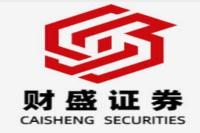China's Economic Landscape: Navigating Global Headwinds and Domestic Opportunities
Meta Description: Deep dive into China's current economic climate, analyzing key policy shifts, market trends (including stock market, bonds, commodities and currency), and their global implications. Explore challenges and growth opportunities across various sectors.
The world watches China. Its economic trajectory profoundly impacts global markets, influencing everything from commodity prices to technological innovation. But what's truly happening beneath the surface? Are the headlines accurately reflecting the nuanced reality of this dynamic economy? This in-depth analysis will dissect recent economic news from leading Chinese and international sources, providing a comprehensive overview that goes beyond the superficial. We'll unravel complex issues, separating fact from speculation, and offering insightful commentary based on years of experience tracking the Chinese market. Forget the clickbait; this is a serious exploration into the heart of China’s economic engine, a journey designed to equip you with a clear, informed understanding of the opportunities and challenges that lie ahead. Whether you're a seasoned investor, a curious observer, or a business leader considering the Chinese market, this comprehensive review will provide invaluable insights. Get ready to delve into the data, decipher the trends, and navigate the fascinating complexities of China's economic story – a narrative as rich and multifaceted as the nation itself. Prepare to uncover hidden gems, avoid potential pitfalls, and gain a crucial edge in understanding one of the world’s most important economies. Let's uncover the truth behind the headlines and discover the real story of China's economic progress.
Key Economic Indicators and Policy Shifts in China
China's economy is a complex tapestry woven with threads of governmental policy, global trade, and domestic innovation. Recent news reveals both challenges and opportunities:
Government Actions and Their Impact:
-
Trade Tensions: The ongoing trade dispute with the US continues to cast a long shadow. While the headline-grabbing tariff threats (like the rumored 10% increase on all Chinese imports) are alarming, the actual impact often proves less dramatic than initially feared. However, the threat of protectionism remains a significant risk factor that necessitates careful monitoring. The situation regarding Xinjiang and allegations of forced labor also complicates trade relations and affects specific industries.
-
Stimulus Measures: The government has implemented various measures to stimulate economic growth, tackling everything from boosting domestic consumption to supporting strategically important sectors. These actions, however, don’t always translate into immediate or widespread results, often depending on how effectively they are implemented across diverse regions.
-
Regulatory Changes: The regulatory landscape is constantly evolving. New guidelines for IPOs, particularly in high-growth sectors like advanced manufacturing, digital economy and green energy (as highlighted by the Shenzhen Stock Exchange's new guidelines), reflect a delicate balancing act between promoting innovation and maintaining financial stability.
-
Monetary Policy: The People’s Bank of China (PBOC) has been carefully managing monetary policy, utilizing tools like reverse repurchase agreements to maintain liquidity and influence interest rates. These actions are designed to strike a balance between supporting growth and controlling inflation, a delicate dance that requires nimble adjustments based on incoming economic data.
Market Trends:
The following table summarizes recent key market indicators:
| Indicator | Recent Trend | Implications |
|-----------------------|-------------------------------------------|----------------------------------------------------------|
| Stock Market (Shanghai & Shenzhen) | Mixed performance; volatility persists. | Investor sentiment remains cautious but there is potential for growth. |
| Bond Market | Fluctuations influenced by global interest rates. | Interest rates are carefully managed to support growth and maintain financial stability. |
| Commodity Prices | Significant variations across sectors; some commodities are experiencing substantial price increases, while others are declining. | Global supply chains and demand play a key role influencing price fluctuations. |
| Currency (RMB) | Fluctuations against the US dollar. | The RMB's value is affected by both domestic and international factors. |
| Real Estate Market | Varied regional performance. | Government policies aimed at stabilizing the market continue to have a significant impact. |
Sector-Specific Analysis:
-
Technology: The rise of the "Guanzi Economy" (a term referring to the burgeoning market for collectible merchandise, often tied to popular digital IP), illustrates China’s creative dynamism, even in the face of global technological constraints. However, the long-term sustainability of such trends remains to be seen. The continued development of AI in areas such as music and sound effects generation shows that China is a major player in technological innovation.
-
Manufacturing: The advanced manufacturing sector is a key area of focus, with government support driving growth in areas like electric vehicles (EVs – exemplified by the success of BYD) and renewable energy. However, competition is fierce, and there are ongoing concerns about supply chain resilience.
-
Consumer Goods: The consumer sector is experiencing a mixed bag. While some sectors thrive, others lag in the face of economic uncertainty. The success of niche markets like premium smartphones (e.g., the launch of the Huawei Mate70 series), however, shows a willingness to spend on high-value goods by a select segment of consumers.
-
Agriculture: The agricultural sector is facing challenges relating to climate change and global food security. Yet, the recent spike in antimony prices highlights how shifts in global demand can significantly impact specific commodity markets.
Navigating the Challenges and Seizing Opportunities
The current economic climate in China presents both challenges and opportunities. While global headwinds and domestic economic adjustments create uncertainty, there's also considerable potential for growth and innovation.
Key Challenges:
-
Geopolitical Risks: Trade tensions, sanction risks, and evolving global alliances represent significant uncertainties.
-
Economic Slowdown: While growth continues, it's happening at a slower pace than in previous years. This necessitates proactive adaptive strategies.
-
Debt Levels: Managing high levels of corporate and local government debt remains a significant challenge.
Key Opportunities:
-
Domestic Consumption: Fostering domestic consumption remains a key opportunity for growth. Targeting specific segments and providing incentives to stimulate buying activity is crucial.
-
Technological Innovation: China continues to be a hotbed of technological innovation, particularly in AI, renewable energy, and advanced manufacturing. This presents exciting opportunities for investment and collaboration.
-
Infrastructure Development: Ongoing investments in infrastructure continue to drive economic activity and create jobs.
Frequently Asked Questions (FAQs)
Q1: What is the outlook for the Chinese stock market?
A1: The Chinese stock market's outlook is complex and depends on numerous factors, including government policies, global economic conditions, and investor sentiment. While the market has shown some resilience, volatility is expected to continue. Long-term prospects remain positive, but short-term fluctuations should be anticipated.
Q2: How is China managing its debt levels?
A2: China is actively working to manage its debt levels through a combination of regulatory reforms, deleveraging initiatives, and fiscal prudence. However, high debt levels remain a key risk factor.
Q3: What are the key sectors driving China's economic growth?
A3: Key sectors driving China's growth include advanced manufacturing, technology, renewable energy, and infrastructure development.
Q4: What are the risks associated with investing in China?
A4: Investing in China carries risks related to geopolitical uncertainty, regulatory changes, currency fluctuations, and economic volatility. Due diligence and a well-diversified investment strategy are essential for mitigating these risks.
Q5: How is China addressing its aging population?
A5: China is grappling with the challenges of an aging population through reforms to its pension system, social security, and healthcare provision. The long-term implications require ongoing policy adjustments and innovative solutions.
Q6: What is the role of the government in China's economy?
A6: The Chinese government plays a significant role in directing economic activity through policy, investment, and regulatory oversight. Its ongoing interventions, while sometimes controversial, are integral to shaping the trajectory of the nation’s economic landscape.
Conclusion
China's economic journey is a dynamic story of growth, challenges, and transformation. While navigating current headwinds, the country's vast potential and proactive policy response offer significant long-term prospects. A thorough understanding of the interplay between policy, markets, and global factors is crucial for anyone seeking to engage with this important economy, whether through investment, trade, or broader engagement. Staying informed, adapting to changes, and maintaining a long-term perspective are key to successfully navigating this complex and dynamic landscape. Remember, keeping a pulse on the ever-evolving economic news and understanding the underlying trends is more important than ever. This requires continuous monitoring and a willingness to adapt to the ever-shifting tides of this pivotal economy.



